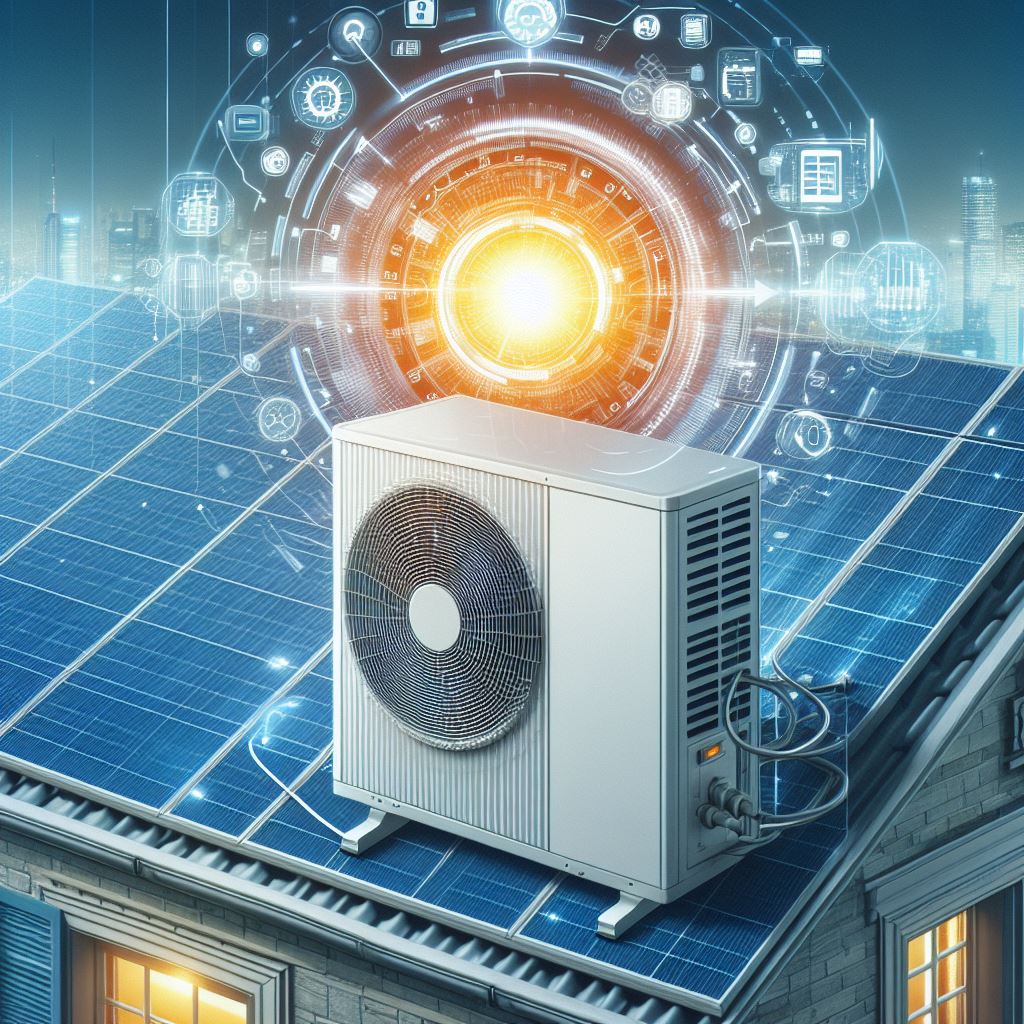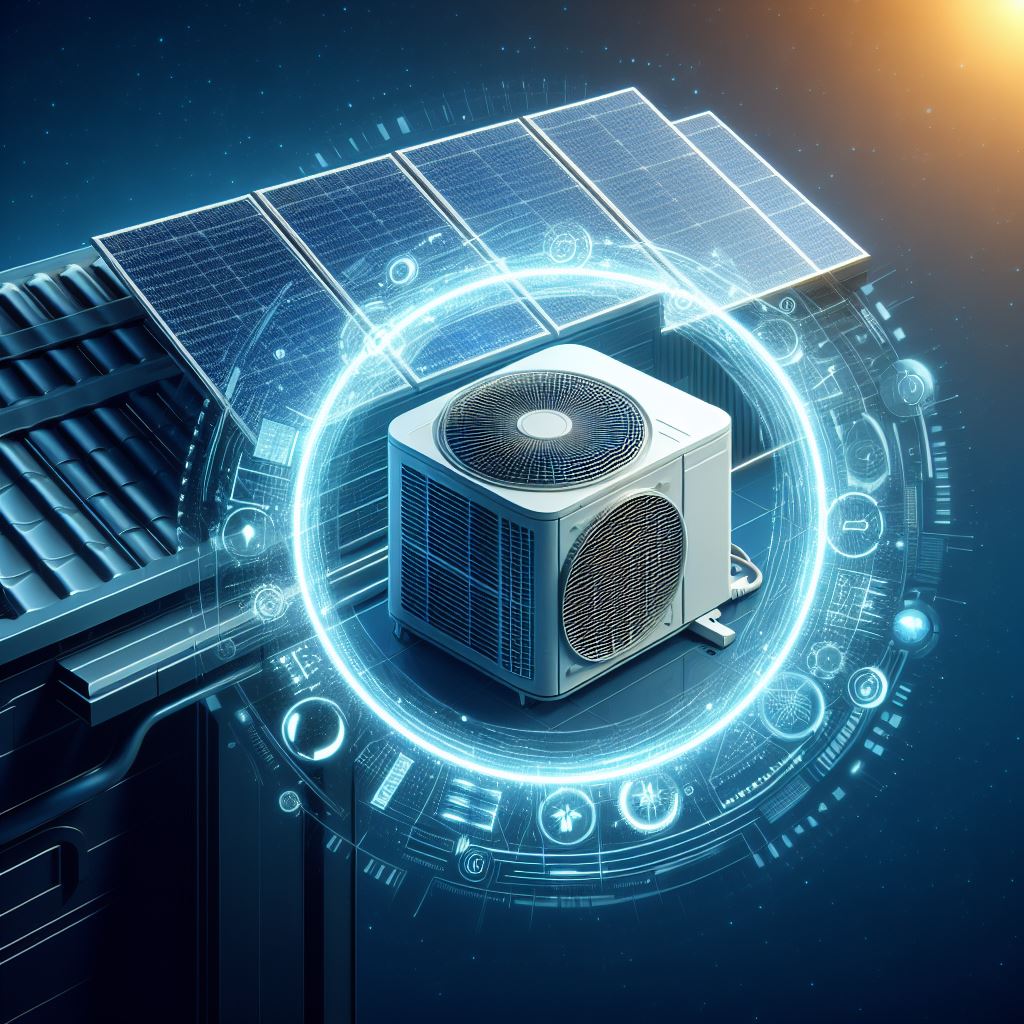Dive deep into the energy dynamics of a “How many watts 5-ton ac” unit, exploring its wattage, tonnage, and factors impacting energy consumption. Learn expert tips to enhance efficiency and lower your cooling costs.
In the midst of sweltering summers, a dependable air conditioning system transforms from a luxury to a necessity. Yet, as environmental concerns escalate, understanding the energy footprint of your cooling solution is paramount. This exhaustive guide delves into the intricacies of a 5-ton AC unit, deciphering its energy requirements, and equipping you with strategies to optimize efficiency.
Understanding AC Capacity: What Does “5 Ton” Mean?
“Ton” is a unit used to measure an AC’s cooling capacity. It doesn’t refer to physical weight, but rather the ability to remove heat equivalent to 12,000 BTUs (British Thermal Units) per hour. So, a 5-ton AC can cool a space as effectively as removing 60,000 BTUs of heat per hour.
Remember: A higher tonnage translates to a more powerful AC, suitable for larger spaces or hot climates.

Converting Tonnage to Wattage: The Power Behind the Coolness
Now, let’s bridge the gap between tons and watts. Here’s the key conversion factor:
- 1 ton of cooling capacity is roughly equal to 1,000 watts of electrical consumption.
Therefore, a 5-ton AC can be estimated to use around:
5 tons x 1,000 watts/ton = 5,000 watts
Calculating Average Air Conditioner Wattage
The formula for calculating average AC wattage is straightforward:
Average AC Wattage = Tonnage × 12,000 BTU / SEER Rating
To elaborate, the average wattage of an AC is derived by dividing the air conditioner’s capacity in BTUs by its SEER rating.
For example, let’s consider an 18 SEER 3-ton air conditioner:
Average AC Wattage (18 SEER 3-Ton) = 3 Tons × 12,000 BTU / 18 SEER = 2,000 Watts
This implies that an 18 SEER 3-ton AC, on average, consumes 2 kWh per hour. Throughout its on-and-off cycles, it may operate at various wattages, but the average remains around 2,000W.
Determining Maximum Air Conditioner Wattage
To calculate the maximum wattage, which represents the AC’s power consumption at 100% output, we utilize the fact that the average wattage constitutes 58% of the maximum wattage. The formula for this calculation is:
Maximum AC Wattage = Average AC Wattage / 0.58
For the previously mentioned 18 SEER 3-ton AC unit, the maximum wattage can be calculated as follows:
Maximum AC Wattage (18 SEER 3-Ton) = 2,000 Watts / 0.58 ≈ 3,450 Watts
In summary, an 18 SEER 3-ton air conditioner has a maximum wattage of 3,450W and an average wattage of 2,000W.
Air Conditioner Wattage Calculations
Below are detailed tables illustrating the wattage requirements for air conditioner units of different tonnages and SEER ratings. These tables provide insights into both average and maximum wattage for various configurations.
1-Ton Air Conditioner Units:
| SEER Rating | 1-Ton AC Average Wattage | 1-Ton AC Maximum Wattage |
| 14 SEER | 857 Watts | 1478 Watts |
| 15 SEER | 800 Watts | 1379 Watts |
| 16 SEER | 750 Watts | 1293 Watts |
| 17 SEER | 706 Watts | 1217 Watts |
| 18 SEER | 667 Watts | 1149 Watts |
| 19 SEER | 632 Watts | 1089 Watts |
| 20 SEER | 600 Watts | 1034 Watts |
| 21 SEER | 571 Watts | 985 Watts |
| 22 SEER | 545 Watts | 940 Watts |
| 23 SEER | 522 Watts | 900 Watts |
| 24 SEER | 500 Watts | 862 Watts |
| 25 SEER | 480 Watts | 828 Watts |

1.5-Ton Air Conditioner Units:
| SEER Rating | 1.5-Ton AC Average Wattage | 1.5-Ton AC Maximum Wattage |
| 14 SEER | 1286 Watts | 2217 Watts |
| 15 SEER | 1200 Watts | 2069 Watts |
| 16 SEER | 1125 Watts | 1940 Watts |
| 17 SEER | 1059 Watts | 1826 Watts |
| 18 SEER | 1000 Watts | 1726 Watts |
| 19 SEER | 947 Watts | 1633 Watts |
| 20 SEER | 900 Watts | 1552 Watts |
| 21 SEER | 857 Watts | 1478 Watts |
| 22 SEER | 818 Watts | 1411 Watts |
| 23 SEER | 783 Watts | 1349 Watts |
| 24 SEER | 750 Watts | 1293 Watts |
| 25 SEER | 720 Watts | 1241 Watts |
2-Ton Air Conditioner Units:
| SEER Rating | 2-Ton AC Average Wattage | 2-Ton AC Maximum Wattage |
| 14 SEER | 1714 Watts | 2956 Watts |
| 15 SEER | 1600 Watts | 2759 Watts |
| 16 SEER | 1500 Watts | 2586 Watts |
| 17 SEER | 1412 Watts | 2434 Watts |
| 18 SEER | 1333 Watts | 2294 Watts |
| 19 SEER | 1263 Watts | 2178 Watts |
| 20 SEER | 1200 Watts | 2069 Watts |
| 21 SEER | 1143 Watts | 1970 Watts |
| 22 SEER | 1091 Watts | 1881 Watts |
| 23 SEER | 1043 Watts | 1799 Watts |
| 24 SEER | 1000 Watts | 1724 Watts |
| 25 SEER | 960 Watts | 1655 Watts |
2.5-Ton Air Conditioner Units:
| SEER Rating | 2.5-Ton AC Average Wattage | 2.5-Ton AC Maximum Wattage |
| 14 SEER | 2143 Watts | 3695 Watts |
| 15 SEER | 2000 Watts | 3448 Watts |
| 16 SEER | 1875 Watts | 3233 Watts |
| 17 SEER | 1765 Watts | 3043 Watts |
| 18 SEER | 1667 Watts | 2874 Watts |
| 19 SEER | 1579 Watts | 2722 Watts |
| 20 SEER | 1500 Watts | 2586 Watts |
| 21 SEER | 1429 Watts | 2463 Watts |
| 22 SEER | 1364 Watts | 2351 Watts |
| 23 SEER | 1304 Watts | 2249 Watts |
| 24 SEER | 1250 Watts | 2155 Watts |
| 25 SEER | 1200 Watts | 2069 Watts |
3-Ton Air Conditioner Units:
| SEER Rating | 3-Ton AC Average Wattage | 3-Ton AC Maximum Wattage |
| 14 SEER | 2571 Watts | 4433 Watts |
| 15 SEER | 2400 Watts | 4138 Watts |
| 16 SEER | 2250 Watts | 3879 Watts |
| 17 SEER | 2118 Watts | 3651 Watts |
| 18 SEER | 2000 Watts | 3448 Watts |
| 19 SEER | 1895 Watts | 3267 Watts |
| 20 SEER | 1800 Watts | 3103 Watts |
| 21 SEER | 1714 Watts | 2956 Watts |
| 22 SEER | 1636 Watts | 2821 Watts |
| 23 SEER | 1565 Watts | 2699 Watts |
| 24 SEER | 1500 Watts | 2586 Watts |
| 25 SEER | 1440 Watts | 2483 Watts |
3.5-Ton Air Conditioner Units:
| SEER Rating | 3.5-Ton AC Average Wattage | 3.5-Ton AC Maximum Wattage |
| 14 SEER | 3000 Watts | 5172 Watts |
| 15 SEER | 2800 Watts | 4828 Watts |
| 16 SEER | 2625 Watts | 4526 Watts |
| 17 SEER | 2471 Watts | 4260 Watts |
| 18 SEER | 2333 Watts | 4023 Watts |
| 19 SEER | 2211 Watts | 3811 Watts |
| 20 SEER | 2100 Watts | 3621 Watts |
| 21 SEER | 2000 Watts | 3448 Watts |
| 22 SEER | 1909 Watts | 3292 Watts |
| 23 SEER | 1826 Watts | 3148 Watts |
| 24 SEER | 1750 Watts | 3017 Watts |
| 25 SEER | 1680 Watts | 2897 Watts |
4, 4.5, 5, 6-ton Ac Detail
| SEER Rating | Ton AC | Average Wattage | Maximum Wattage |
| 14 | 4 | 3429 W | 5911 W |
| 15 | 4 | 3200 W | 5517 W |
| 16 | 4 | 3000 W | 5172 W |
| 17 | 4 | 2824 W | 4868 W |
| 18 | 4 | 2667 W | 4598 W |
| 19 | 4 | 2526 W | 4356 W |
| 20 | 4 | 2400 W | 4138 W |
| 21 | 4 | 2256 W | 3941 W |
| 22 | 4 | 2182 W | 3762 W |
| 23 | 4 | 2087 W | 3598 W |
| 24 | 4 | 2000 W | 3448 W |
| 25 | 4 | 1920 W | 3310 W |
| 14 | 4.5 | 3857 W | 6650 W |
| 15 | 4.5 | 3600 W | 6207 W |
| 16 | 4.5 | 3375 W | 5819 W |
| 17 | 4.5 | 3176 W | 5477 W |
| 18 | 4.5 | 3000 W | 5172 W |
| 19 | 4.5 | 2842 W | 4900 W |
| 20 | 4.5 | 2700 W | 4655 W |
| 21 | 4.5 | 2571 W | 4433 W |
| 22 | 4.5 | 2455 W | 4232 W |
| 23 | 4.5 | 2348 W | 4048 W |
| 24 | 4.5 | 2250 W | 3879 W |
| 25 | 4.5 | 2160 W | 3724 W |
| 14 | 5 | 4286 W | 7389 W |
| 15 | 5 | 4000 W | 6897 W |
| 16 | 5 | 3750 W | 6466 W |
| 17 | 5 | 3529 W | 6085 W |
| 18 | 5 | 3333 W | 5747 W |
| 19 | 5 | 3158 W | 5445 W |
| 20 | 5 | 3000 W | 5172 W |
| 21 | 5 | 2857 W | 4926 W |
| 22 | 5 | 2727 W | 4702 W |
| 23 | 5 | 2609 W | 4498 W |
| 24 | 5 | 2500 W | 4310 W |
| 25 | 5 | 2400 W | 4138 W |
| 14 | 6 | 5143 W | 8867 W |
| 15 | 6 | 4800 W | 8276 W |
| 16 | 6 | 4500 W | 7759 W |
| 17 | 6 | 4235 W | 7302 W |
| 18 | 6 | 4000 W | 6897 W |
| 19 | 6 | 3789 W | 6534 W |
| 20 | 6 | 3600 W | 6037 W |
| 21 | 6 | 3429 W | 5911 W |
| 22 | 6 | 3273 W | 5643 W |
| 23 | 6 | 3130 W | 5397 W |
| 24 | 6 | 3000 W | 5172 W |
| 25 | 6 | 2880 W | 4966 W |
What Size Generator To Run 5 Ton AC Unit?
Determining the right generator size to power a 5-ton AC unit involves some calculations and considerations. A 5-ton AC is among the largest units that can be efficiently powered by a generator.
This hefty cooling machine churns out a remarkable 60,000 BTUs of cooling power, ample for cooling a spacious home of up to 3000 square feet.
So, how many watts does it take to operate such a robust 5-ton air conditioner?
The wattage for a 5-ton AC can vary, ranging from 4,000W to 8,000W, equivalent to 16 to 34 Amps on a 240V circuit.
Determining the generator size to run a 5-ton AC involves figuring out its overall wattage. Here are three straightforward methods:
- Consult the specification sheet for the power rating in Watts.
- Check the Energy Efficiency Ratio (EER) rating in the specification sheet. You can calculate wattage by dividing BTUs by the EER rating; for instance, 60,000 BTU / 10 EER = 6,000W.
- Look at the specification sheet for the current (measured in Amps) and voltage (measured in Volts). You can calculate wattage by multiplying the current by the voltage; for example, 25 Amps * 240V = 6,000W.
An average 5-ton air conditioner with a 10 EER rating will typically operate on 6,000W and draw 25 Amps at 240V.
Common examples of 60,000 BTU units include 4-zone and 5-zone mini-split air conditioners.
For most 5-ton AC units, a 6,000W generator will suffice. However, it’s essential to consider start-up wattage requirements. Due to the high power demands during startup, it’s prudent to opt for a generator capable of handling at least 7,000W start-up wattage.
One popular choice for powering a 5-ton AC unit is the Westinghouse WGen6000. This 6,000W generator can deliver up to 7,500W of power, making it an ideal match for a 5-ton air conditioner.
Factors Influencing Energy Consumption:
Seasonal Energy Efficiency Ratio (SEER):
SEER rating serves as a benchmark for an AC unit’s efficiency, representing the ratio of cooling output to energy input over a typical cooling season. Higher SEER ratings signify greater efficiency and lower energy consumption. Investing in a unit with a higher SEER rating can yield substantial long-term energy savings.
Thermostat Settings:
The thermostat acts as the control center of the AC system, dictating when the unit cycles on and off. Optimal thermostat settings strike a balance between comfort and efficiency. Setting the thermostat to higher temperatures during peak hours or when the space is unoccupied can alleviate strain on the system and reduce energy consumption.
Insulation and Home Design:
Proper insulation and efficient home design play a pivotal role in minimizing heat transfer between indoor and outdoor environments. Well-insulated homes with strategically placed windows and shades can reduce the cooling load on the AC system, resulting in lower energy consumption.
Regular Maintenance:
Scheduled maintenance is crucial for preserving the efficiency and longevity of an AC unit. Tasks such as filter replacement, coil cleaning, and refrigerant level checks ensure optimal performance. A well-maintained system operates more efficiently, consuming less energy to achieve the desired cooling output.
Climate Variability:
The local climate exerts a significant influence on the energy consumption of an AC unit. Regions with hotter climates necessitate more extensive and prolonged cooling, leading to increased energy consumption. Conversely, milder climates require less intensive cooling, resulting in lower energy demands.
Exploring the Advancements of Inverter Air Conditioning Units (ACs)
Inverter air conditioners (ACs) stand as a testament to the continuous evolution of cooling technology. Unlike their conventional counterparts, which rely on fixed-speed compressors, inverter ACs employ variable-speed compressors, revolutionizing the way we cool our spaces.
Understanding Traditional Non-Inverter ACs
The operational mechanism of traditional ACs is relatively straightforward: once the desired temperature is reached, the compressor shuts off. However, this simplistic approach leads to a cycle of frequent starts and stops as temperatures fluctuate, ultimately resulting in higher energy consumption. Moreover, the cooling process may not be as efficient since compressors often do not start at optimal RPMs, prolonging the time required to achieve the desired cooling effect.
Delving into the Working Principle of Inverter ACs
In contrast, inverter ACs operate on a more sophisticated principle, leveraging high RPMs at startup to meet cooling demands efficiently. While this initial surge in power consumption might seem counterintuitive, it sets the stage for optimized performance. Once the desired temperature is attained, the compressor seamlessly adjusts its RPMs, striking a delicate balance between maintaining comfort and conserving energy. By minimizing the need for frequent starts and stops, inverter ACs ensure stable indoor temperatures, providing occupants with uninterrupted comfort while reducing energy wastage. Furthermore, the gradual adjustment from high to optimal RPMs contributes to lower power consumption over time, translating into tangible savings on electricity bills.
Unraveling the Operating Mechanism
At the heart of inverter ACs lies a sophisticated control system that modulates compressor speed by manipulating the frequency of the input power supply. This dynamic adjustment allows the compressor to operate at varying speeds, tailoring its output to match the cooling requirements of the space. As a result, the compressor slows down when the desired temperature is achieved, minimizing power consumption and mitigating wear and tear on vital components.

Exploring the Multifaceted Advantages of Inverter ACs
The benefits offered by inverter ACs extend far beyond mere energy savings. Here’s a closer look at some of the key advantages they bring to the table:
- Enhanced Energy Efficiency: By adapting their cooling capacity in real-time based on ambient conditions, inverter ACs deliver unparalleled energy efficiency, significantly reducing electricity consumption and environmental impact.
- Rapid Cooling Performance: Leveraging their ability to operate at high speeds during the initial cooling phase, inverter ACs can swiftly bring down temperatures, ensuring rapid comfort without compromising on efficiency.
- Whisper-Quiet Operation: The variable-speed compressor technology employed by inverter ACs results in quieter operation compared to traditional models, minimizing disruptions and creating a more serene indoor environment.
- Extended Lifespan: With fewer mechanical stresses and smoother operation, inverter ACs boast a longer lifespan, offering sustained performance and reliability over the years.
FAQs about How many watts 5-ton ac
Start by determining the monthly expenses for running a 1-ton AC unit that operates for 3 hours daily, with an electricity rate of $0.05/kWh.
To begin, we convert the power rating of the 1-ton AC to kilowatts (kW):
1 ton AC = 1200 watts = 1.2 kW
Next, we compute the total kWh consumption per day:
kWh for 3 hours daily = 3 * 1.2 kWh = 3.6 kWh
Then, we calculate the monthly bill:
Monthly bill = 3.6 kWh * $0.05/kWh = $0.18
let’s assess the monthly expenditure for operating a 1.5-ton AC unit over 5 hours daily, priced at $0.1/kWh.
We convert the power rating of the 1.5-ton AC to kW:
1.5 ton AC = 1800 watts = 1.8 kW
Subsequently, we determine the daily kWh consumption:
kWh for 5 hours = 5 * 1.8 kWh = 9 kWh
Then, we compute the monthly bill:
Monthly bill = 9 kWh * $0.1/kWh = $0.9
Analyze the monthly expenses associated with running a 2-ton AC unit for 3 hours daily, priced at $0.2/kWh.
We convert the power rating of the 2-ton AC to kW:
2 ton AC = 2400 watts = 2.4 kW
Next, we determine the daily kWh consumption:
kWh for 3 hours = 3 * 2.4 kWh = 7.2 kWh
Finally, we calculate the monthly bill:
Monthly bill = 7.2 kWh * $0.2/kWh = $1.44
Are higher SEER ratings advantageous for energy savings?
Yes, higher SEER ratings indicate greater energy efficiency, leading to reduced electricity consumption and lower utility expenses.
Does climate influence the energy consumption of a 5-ton AC unit?
Yes, hotter climates necessitate more extensive cooling, resulting in higher energy consumption compared to cooler regions.
How does maintenance contribute to energy efficiency?
Regular maintenance tasks optimize AC performance, reducing energy consumption and enhancing efficiency.
Conclusion:
By unraveling the intricacies of energy consumption factors, homeowners can make informed decisions to optimize the performance of their 5-ton AC units. From investing in high-efficiency systems to implementing energy-saving practices, every step towards efficiency enhancement contributes to lower energy bills and a greener planet.
Visit our Site:
Welcome to EG Power Ltd – your go-to destination for solar solutions. With over five years of experience in solar and renewable energy, we’re dedicated to providing the most cost-effective panels on the market.
We prioritize environmental sensitivity and offer personalized solutions to meet your needs. Join us in saving the planet – contact us today!
Phone: 0300 1819060
Email: info@egpowerltd.com

